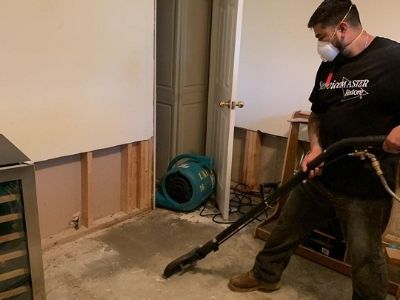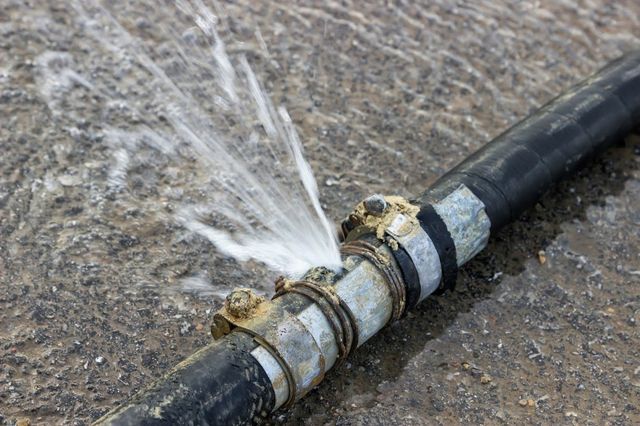Spotting and Quickly Fixing a Busted Pipe: Key Steps
Call TodayWhat're your thoughts on How to install a dishwasher safely?

A burst pipeline is a major emergency; you can only stand as you enjoy water you pay a lot to reunite with the planet. In worse cases, you see a pool on your kitchen flooring, which is an excellent journey hazard, especially if you have kids around. If the pipeline that ruptured remained in your wall surfaces, trouble: you might require to paint that whole area.
Exactly how can a catastrophe like a ruptured pipe be stopped as well as handled? Well, by listening to your professional emergency plumbings and following these rules.
Just how do I know when my pipes have ruptured?
Changing water pressures
Pipelines do not simply burst in a day. You may have seen that your kitchen area tap or shower does not run promptly when you turn the tap. It may stop for a few secs and then blast you with more pressure than typical.
In various other instances, the water may appear normal at first, after that drop in pressure after a couple of secs.
Contaminated water
Lots of people think a burst pipe is a one-way outlet. Rather the contrary. As water drains of the hole or gash in your plumbing system, contaminants discover their method.
Your water might be contaminated from the source, so if you can, inspect if your water tank has any type of issues. Nonetheless, if your drinking water is supplied as well as cleansed by the local government, you need to call your plumber instantly if you see or smell anything funny in your water.
Puddles under pipes and sinks
When a pipeline ruptureds, the outflow forms a puddle. It might show up that the pool is growing in size, and despite the amount of times you mop the puddle, in a couple of mins, there's one more one waiting to be cleaned. Usually, you might not be able to map the puddle to any noticeable pipes. This is an indicator to call an expert plumber.
Wet wall surfaces and water discolorations
Before a pipeline bursts, it will certainly leak, the majority of times. If this consistent dripping goes unnoticed, the leakage may finish right into a broad gash in your pipe. One very easy way to prevent this emergency is to keep an eye out for wet wall surfaces advertisement water discolorations. These water spots will certainly lead you right to the leak.
Untraceable trickling noises
Pipe ruptureds can take place in the most unpleasant locations, like within concrete, inside wall surfaces, or under sinks. When your house goes silent, you may be able to hear an aggravatingly relentless trickling noise. Even after you have actually checked your shower head and also kitchen area faucet, the dripping might proceed.
Beloved viewers, the trickling might be originating from a pipeline inside your wall surfaces. There isn't much you can do regarding that, except tell an expert plumber.
Turn up the Warmth
Establish fans to blow warm into cool spaces. Keep the garage door closed. If you have actually minimized water flow, heat one of the most prone pipes (usually in cellars and crawl spaces or near outside wall surfaces) with a hair dryer. Leave the tap on while you apply warmth. As you melt ice, the circulation will raise. To avoid pipelines from freezing, insulate your walls.
Beginning Doing Away With the Water
Get the wipe, containers and also a shop vacuum cleaner to start to do away with the water because you definitely do not want it saturating into whatever else in your house. Plus, a quick tidy up will certainly reduce the chances of something getting musty.
What do I do when I detect a burst pipeline?
Your water meter will certainly remain to run also while your water wastes. To decrease your losses, locate the major controls and also transform the supply off. The water pipe are an above-ground framework beside your property.
How to Fix & Detect a Leaking Pipe
How Do I Know if a Pipe is Leaking?
Leak detection tests can help you determine if your pipe has a leak. Even if you don’t see an apparent leak, you should still conduct leak detection tests regularly to save water and money—and prevent major damage to your home.
Water meter. It can be helpful to figure out what your usual water meter usage numbers are and then monitor them regularly. To monitor your meter, first, turn off all water faucets in your home. Check the meter and write down the numbers. In a few hours, check the meter again. If the numbers have changed, you have a leak. Water gauge. Use a water gauge to test your water pressure. Your showerhead should produce a certain amount of water pressure based on its model and design. If the pressure is lower than it is supposed to be for that specific showerhead, your home likely has a leak. Puddles. Look inside your bathroom, laundry, and kitchen sink cabinets. Puddles around the cabinets or around toilets, tubs, showers, and washing machines indicate the presence of a leaking pipe. You may also notice loose tiles, peeling or flaking paint, or mold caused by water accumulation. Napkin test. Even if you don’t see any puddles, you may still have a leak. You can test for water leaks in the bathroom, laundry, and kitchen by wiping below-sink connections with a napkin, paper towel, or piece of toilet paper. If it becomes damp, you probably have a leaking pipe under the sink. Discolored walls. Walls that are discolored—usually with brown or yellow stains—or bulging might mean that they have been impacted by water damage caused by a leaking pipe. Smell. A leaky pipe will create sitting water, and over time, that water may develop a musty smell. If your home smells musty, but you can’t locate the source, it may be due to a leak. Steps for Fixing a Leaking Pipe
A leaky drain can be remedied by tightening the pipe base, replacing the drain seal, caulking the rim, and tightening the pipe nut. Similarly, a leaking toilet pipe can be treated by tightening the packing nut. You may also need to replace the valve. A leaky faucet may just need tightening or replacement of the washers. If that doesn’t work, consider replacing your faucet. If your pipe has a hole in it, you may want to use a pipe leak sealer or pipe leak tape. This quick fix for water pipe leaks can also temporarily fix a copper pipe leak. https://www.ahs.com/home-matters/quick-tips/how-to-tell-if-pipes-are-leaking/

I stumbled upon that blog entry about How to Prepare for Your Dishwasher Installation while doing a search on the web. Those who enjoyed reading our blog posting if you please remember to share it. I appreciate reading our article about How to Prepare for Your Dishwasher Installation.
For fast relief, call!